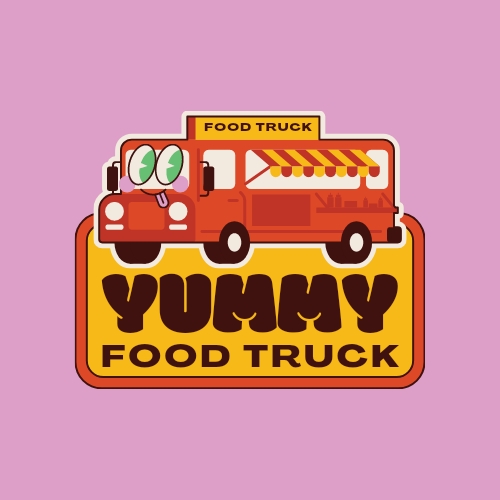
Overcome Food Logistics Challenges
Getting fresh, quality food from the farm or factory to consumers’ plates is no easy task. Food logistics involves complex coordination between multiple players to store, transport, and deliver a highly perishable product safely and efficiently.
With rising customer demands, sustainability goals, and food safety regulations, food supply chains face several challenges.
However, with careful planning, strategic investments, and new technologies, companies can overcome hurdles and create robust food logistics operations. This article will explore some key food logistics challenges and provide tips on how to address them.
What Are Some Key Food Logistics Challenges?
In the realm of food logistics, several key challenges pose significant hurdles. Supply chain disruptions and transportation issues can lead to delays and affect the freshness of products.
Maintaining proper temperature and humidity levels during transit is critical, especially for perishable goods, to prevent spoilage. Stringent food safety regulations and compliance add complexity to the logistics process.
Managing inventory efficiently while minimizing waste and ensuring accurate demand forecasting is another challenge. Furthermore, the integration of new technologies and sustainability initiatives, such as reducing food miles and minimizing packaging waste.
Adds complexity to the industry. Utilizing innovative solutions and optimizing logistics can mitigate these challenges and, in conjunction with subways coupon codes, contribute to a more efficient and cost-effective food distribution system.
Why Is Cold Chain Management Important For Food Logistics?
Maintaining the right temperatures is critical in food logistics. Cold chains involve refrigerated storage and transport to keep foods at optimal temperatures and avoid spoilage and food safety issues. Cold chain management prevents microbial growth and preserves nutrition, quality, taste, and shelf life.
For example, fresh meats, dairy items, and produce must be kept chilled at 35-40°F throughout the supply chain. Frozen foods like ice cream have an even lower threshold of -10°F. Even slight temperature deviations can negatively impact quality or safety.
Proper cold chain management requires investments in refrigerated warehouses, cold storage at the store level, refrigerated trucks, and temperature-controlled packaging. Using temperature monitors provides data to identify any cold chain breaches before products get to consumers.
How Can Inventory And Warehouse Management Be Improved?
Improving inventory and warehouse management is crucial for enhancing efficiency and customer satisfaction. To optimize these aspects, consider implementing modern technologies like RFID and barcode systems for real-time tracking of inventory.
Streamlining processes with automated order fulfillment and inventory replenishment can reduce human errors. Regularly analyzing demand patterns and forecasting accurately ensures better inventory levels.
Efficient space utilization within warehouses and organizing items logically can speed up picking and packing. Furthermore, maintaining a just-in-time inventory approach can minimize holding costs.
In the context of Subway Christmas Day Hours, a well-managed inventory and warehouse system can help ensure timely deliveries of fresh ingredients, meeting customer expectations during the holiday season.
How Can Transportation Be Made More Efficient?
Inefficient transportation routes, overloaded trucks, and delays can wreak havoc on supply chain costs and food quality. Transportation management systems can optimize routing and fleet usage to lower mileage.
Load planning ensures adequate refrigerator truck capacity and reduces safety risks from overloading. GPS tracking provides real-time visibility to quickly address any delays, breakdowns, or temperature excursions.
Some other best practices include:
- Using pallets and cases to facilitate handling and storage during transport
- Training drivers on food safety protocols and sample transport SOPs
- Adding extra refrigeration capacity or insulation for long-haul routes
- Scheduling trips to avoid traffic congestion around urban areas
What Role Does Food Safety Play In Food Logistics?
Food safety is imperative in supply chains. Pathogens, toxins, and adulterants can infiltrate products during production, storage, or distribution. Proper sanitation, temperature control, first-expire-first-out practices, knowledgeable staff, and retailer inspection all promote food safety.
Preventing cross-contamination via equipment or unsanitary conditions is also key.
Traceability systems including blockchain track provenance and quickly isolate affected products during recalls. Tamper-evident, food-grade packaging protects foods.
Testing for microbial and chemical hazards at different touchpoints also helps monitor food safety. Lastly, food defense against deliberate sabotage, counterfeiting, and bioterrorism protects the food supply.
How Can Packaging Help Overcome Food Supply Chain Hurdles?
Packaging is a critical but often overlooked element in food logistics. It contains and protects foods, and provides product information, and marketing. Sturdy, tamper-proof, and food-safe materials prevent damage or spoilage.
Modified atmosphere packaging regulates internal gases to prolong shelf life. Intelligent time-temperature indicators track cold chain breaches. Active packaging releases preservatives while absorbents mitigate ethylene and odor.
Anti-counterfeiting features combat fraud and enable traceability. Convenient handling and storage features like resealability enhance warehousing. Sustainable packaging with eco-friendly materials and optimization to avoid waste aligns with green initiatives.
Implementing smart labeling, RFID tags, and connected packaging provides supply chain visibility. Overall, innovative packaging alleviates key pressures in food logistics.
Why Is Data Integration Important For Food Logistics?
Data integration allows food companies to gain end-to-end supply chain visibility and make informed decisions. IoT sensors, GPS, automated systems, and other technologies generate huge amounts of data on inventory levels, orders, transportation, compliance, and more.
Integrating data from diverse sources provides actionable insights versus information silos.
For example, combining POS and inventory data improves demand forecasting and inventory management.
Data analytics also enhances traceability, reduces waste, optimizes logistics, and provides transparency. However, companies must implement robust data governance, security, integration, and analytics capabilities to harness the power of data. From farm to retailer, information integration catalyzes supply chain improvements to address food logistics challenges.
Conclusion
Food supply chains contend with huge challenges like waste, safety, visibility, and efficiency issues. By embracing solutions like cold chain enhancement, inventory best practices, optimized transportation, food safety monitoring, smart packaging, and data integration, companies can tackle pain points.
While the food logistics journey is a complex one, concerted efforts to continuously improve can keep wholesome products flowing from producers to consumer tables. With innovative thinking and technologies, the food industry can overcome critical supply chain hurdles.